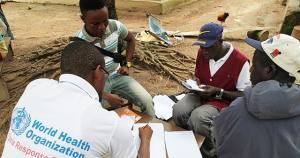Tracing Ebola in Tonkolili
When the Tonkolili District reported a new case of Ebola on 24 July 2015, it marked a change in the Sierra Leone Ebola response. A rapid response team was despatched to manage this new source of infection, the first case in that area for more than 150 days. It resulted in a whole village being quarantined, and showed how quickly Ebola can travel and that no district can let down its guard until there are zero cases of Ebola.
WHO immediately sent more than 20 staff, logistics and supplies to the area. “We are deploying more technical staff with the required expertise to Tonkolili District because getting it right in Tonkolili is a must and is critical in getting to zero at this stage of the outbreak” said Dr Anders Nordström, WHO Representative. Epidemiologists, social mobilisers, contact tracing mentors, coordinators and operations teams were mobilised from other districts.
Not sorcery, Ebola!
The resurgence of the deadly Ebola disease drew attention to Massessehbeh village. It was the last residence of the confirmed Ebola patient, a young man who had fallen ill and travelled there from Freetown. The community had provided care for him in his illness and buried him after his death at the Masanga hospital. Family members had attributed his illness and death to sorcery and curse, and treated his care and burial as an ordinary case, not suspecting it was Ebola.
After his death and confirmation that it was from Ebola, all his contacts were identified, including health workers, staff and nursing students at the Masanga Hospital, family members and friends. The case left a trail of 507 people placed in mandatory quarantine in Massessehbeh village, where 29 of them were considered high risk contacts. Two – the mother and maternal uncle of the deceased were transferred to an Ebola Treatment centre where they too have tested positive for Ebola.
